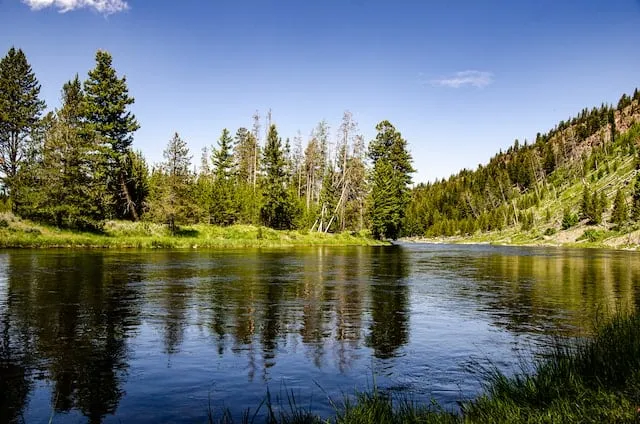Yellowstone National Park.

Yellowstone National Park is a vast and mesmerizing area of wilderness that is primarily located in the state of Wyoming, with tiny areas extending into Montana and Idaho. It is frequently regarded as the "crown jewel" of the American National Park system.
Since its establishment as the first national park in the world in 1872, Yellowstone has won over tourists' hearts and minds with its unmatched natural beauty, distinctive geological characteristics, and profusion of species.
We shall examine the fascinating past, amazing geology, and biological significance of Yellowstone National Park in this article.
A Historical Legacy:
The history of Yellowstone is one of conservation and preservation. It was the outcome of a brilliant idea that understood the necessity of safeguarding and preserving natural beauty for upcoming generations.
The formation of the park was a crucial turning point for the conservation movement, and it served as a template for the creation of national parks all over the world.
Natural Wonders:
The geothermal wonders of Yellowstone are one of its most distinguishing features. The park is perched on a super volcano, a huge chamber of molten rock beneath the earth. The well-known geysers, hot springs, and fumaroles in the park are fed by this geological hotspot.
Old Faithful: Possibly the most well-known geyser in history, Old Faithful erupts roughly every 90 minutes, living up to its name. Numerous tourists assemble to see its towering plume of boiling water because of its consistent and stunning performances.
Camelback Hot Springs:
Mammoth Hot Springs is a sizable network of terraced hot springs that is situated in the park's northern region. Its distinctive travertine formations produce bizarre, unearthly scenes.
Prismatic Grand Spring:
The Grand Prismatic Spring, the biggest hot spring in the country and one of Yellowstone's most popular attractions is renowned for its breathtaking rainbow-colored hues. Its vivid colours are a product of the microbiological life that flourishes in extremely hot environments.
Wildlife Abundance:
Yellowstone is renowned for its rich variety of species. Numerous species, including bison, elk, grizzly bears, wolves, and bald eagles, can be found in the park.
Grey wolves were brought back to Yellowstone in 1995, which was a big step for wildlife conservation and helped to balance the ecosystem of the park.
Energy Efficiency & Preservation:
The delicate ecosystem that makes up Yellowstone's geothermal characteristics has to be preserved. Strict guidelines and designated boardwalks in the park guarantee that visitors can see these beauties while maintaining their integrity.
To lessen the impact on these delicate ecosystems, the National Park Service places a strong emphasis on responsible tourist education.
Outdoor Adventure:
Yellowstone provides a wide range of outdoor activities so that tourists can fully appreciate its breathtaking natural beauty. Popular activities include hiking, camping, fishing, and wildlife observation.
Both inexperienced and seasoned hikers can explore the park's varied landscapes thanks to its wide path network.
Despite being praised for its natural beauty, Yellowstone nevertheless faces conservation issues. Threats to its ecosystems include climate change, invasive species, and habitat fragmentation.
Conservation efforts are being made to address these problems and safeguard the park's distinctive biodiversity.
In conclusion:
Yellowstone National Park is a monument to the wonder and beauty of nature. It is a place unlike any other due to its amazing geological features, diverse species, and historical significance.
Yellowstone provides millions of people with the opportunity to get in touch with nature, experience its magnificence, and realize how crucial it is to protect such riches for future generations.
Yellowstone still evokes awe and veneration for the world's natural wonders, as it has for almost 150 years.
Read our next article about Niagara Falls!


